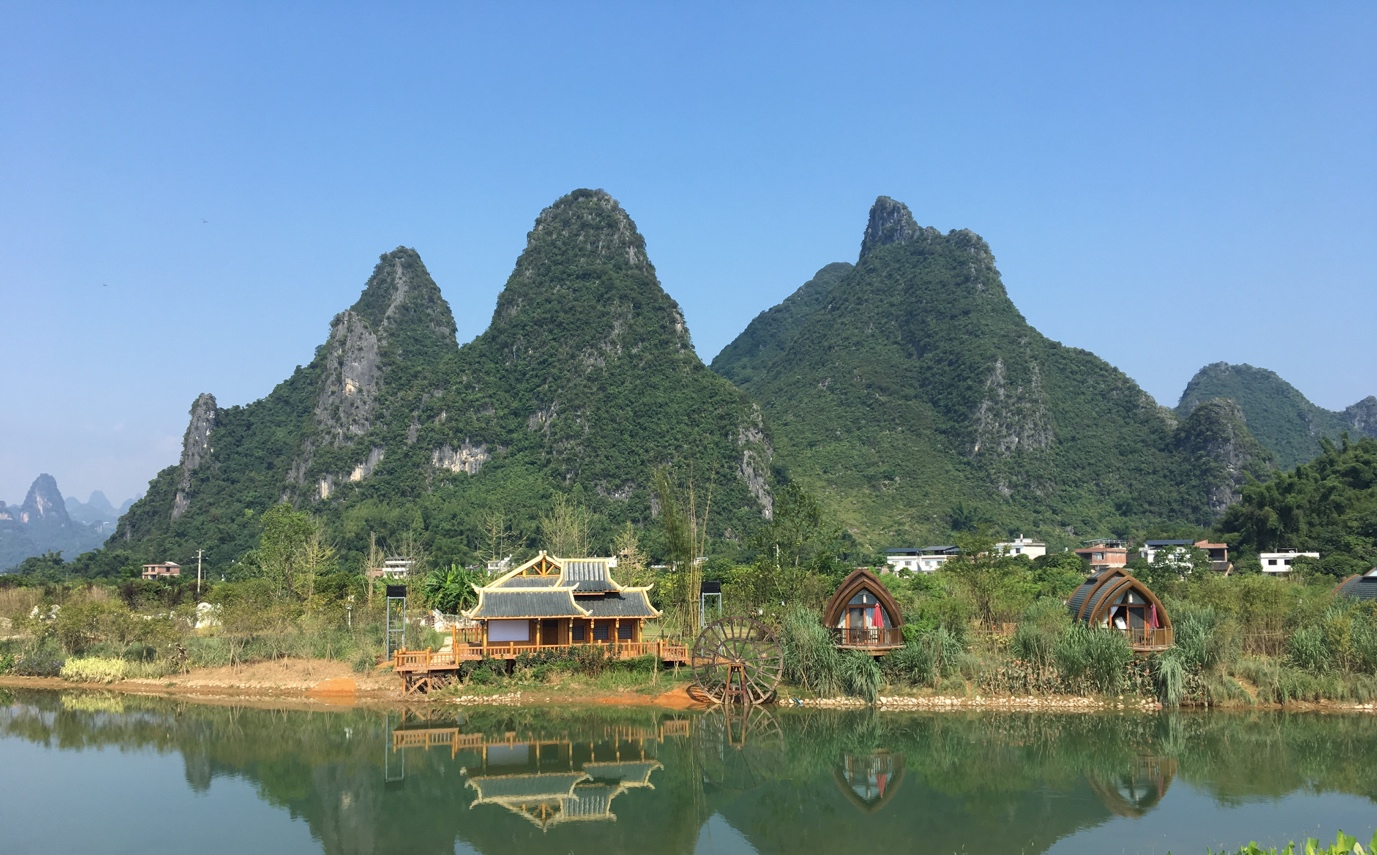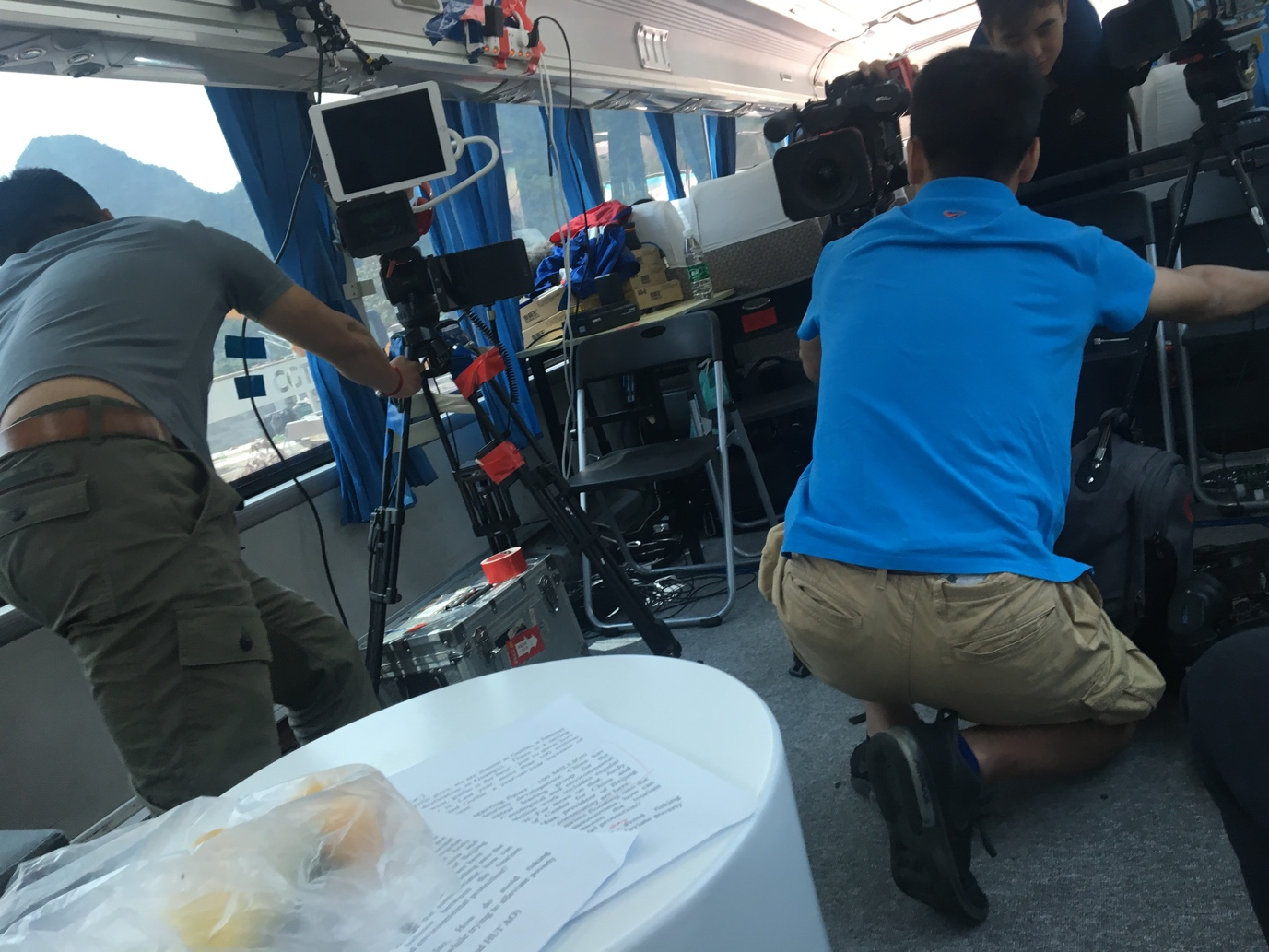
A mammoth trip or a crazy trip? I – not only me I guess – have been wondering if it's possible ever since we planned the 12-day TV show series months ago.
Each day we have three live TV shows and two elephantine livestreams – with three teams crossing northeastern, southwestern and southeastern parts of China. And my job is hosting the live shows on the southeastern route – either on the coach-converted mobile studio or on the ground.
Thanks to China's developed motorway networks and the country's expansive 4G coverage, the crews are able to talk to each other while traveling on road. Yet of course, technical mishaps do happen and happen multiple times. All we need to do is "stay calm and carry on."
"East or west, Guilin is the best"
Guilin – no need to mention its location – is a household name worldwide. Its karst topography is picturesque, hence attracting millions of tourists to the Chinese city. Official figures show the trips made to Guilin in 2018 surpassed 100 million – a staggering number, isn't it?

Karst topography in Yangshuo County, Guilin City, in south China. /CGTN Photo
Part of the reason why this little Chinese city is luring this great amount of people lies in its karst topography. These mountains – all standing like soldiers – together with the serene Lijiang River make this part of the world so breathtaking. Nonetheless, this was a different scene back in the 1970s, when industrial and domestic waste was poured directly into the river. The Chinese government, in the hopes of preserving Guilin's natural beauty, issued guidelines in the 1980s and turned the city one of the most livable across the globe.
Well, work always comes first.
Hosts need to cover a multitude of topics here in Guilin, including eco-tourism, ecological development, e-commerce and poverty alleviation. This means a tremendous amount of research and some "crash courses" before we hit the road. Fortunately, two guests are with us along the way to fill the airtime. And we all have to be fast learners to handle the job.

Filming crew cram into a golf cart behind the scenes. /CGTN Photo
"Live TV shows are never perfect"
Working in the steamy heat in Guilin – known for its subtropical weather – is anything but easy. The scorching sun beat us remorselessly, and the sweat ruined our makeup totally.
Live TV shows are never perfect – this is true on this gigantic trip – as lines may drop, lights may go out, and mobile phones may turn defunct when they are most needed.
To better present our viewers a well-rounded landscape of China, hosts on three routes should be connected via satellite signal at all times. When some teams drive into the middle of nowhere, lines would drop and a whole team would go missing. This means the other teams have to improvise and adlib until the producers tell the hosts to stop. Behind the cameras, producers always put on a pantomime show.

A CGTN cameramen holds a tripod still in our coach-converted studio as the vehicle swerves. /CGTN Photo
Luckily, this rarely happens to our route, as the southern part of China – especially Guangdong Province – is better equipped with 4G networks. Guangdong, the frontline of China's reform and opening-up over four decades ago, is also the base of the country's tech giant Huawei. And the telecoms communication company is pushing its 5G technologies in some pilot areas in China and overseas.
In 12 days, we need to drive nearly 2,000 kilometers and plod through 60 TV shows! Moreover, this should be multiplied by three since CGTN has dispatched three groups of people on the road. The job is tough but full of fun!

Copyright © 2018 CGTN. Beijing ICP prepared NO.16065310-3
Copyright © 2018 CGTN. Beijing ICP prepared NO.16065310-3